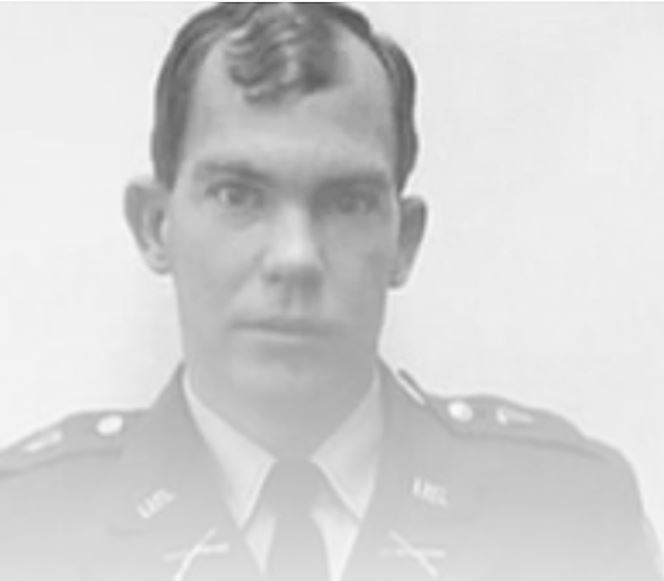
By Nick Turse
From Responsible Statecraft | Original Article
His role in the 1968 slaughter of over 100 Vietnamese was a feature, not a bug, in the ill-fated US war in Southeast Asia
On the evening of March 15, 1968, members of the Charlie Company, 1st Battalion, 20th Infantry, were briefed by their commanding officer, Captain Ernest Medina, on a planned operation the next day in an area of Quang Ngai Province, South Vietnam that they knew as “Pinkville.”
As unit member Harry Stanley recalled, Medina “ordered us to ‘kill everything in the village.’” Infantryman Salvatore LaMartina remembered Medina’s words only slightly differently: they were to “kill everything that breathed.” What stuck in artillery forward observer James Flynn’s mind was a question one of the other soldiers asked: “Are we supposed to kill women and children?” And Medina’s reply: “Kill everything that moves.”
The next morning, the troops clambered aboard helicopters and were airlifted into what they thought would be a “hot LZ”— a landing zone where they’d be under hostile fire. As it happened, the Americans entering My Lai encountered only civilians: women, children, and old men. Nevertheless, the soldiers of Charlie Company carried out Medina’s orders with horrifying precision.
Over four hours, members of Charlie Company methodically slaughtered more than five hundred unarmed victims, killing some in ones and twos, others in small groups, and collecting many more in a drainage ditch that would become an infamous killing ground. They faced no opposition. They even took a quiet break to eat lunch amid the carnage.
An Army inquiry into the killings eventually determined that thirty individuals were involved in criminal misconduct during the massacre or its cover-up. Twenty- eight of them were officers, including two generals, and the investigation concluded they had committed a total of 224 serious offenses. Only one man was ever convicted of any wrongdoing: Charlie Company’s Lieutenant William Laws Calley Jr., who died on April 28 in hospice in Gainesville, Fla, according to Social Security Administration records. He was 80.
It took one year and the herculean efforts of a whistleblowing 22-year-old Vietnam veteran named Ron Ridenhour and the painstaking investigative reporting of Seymour Hersh, who published newspaper articles about the slaughter, to expose the My Lai massacre.
The Pentagon, for its part, consistently fought to minimize what had happened, claiming that reports by Vietnamese survivors were wildly exaggerated. At the same time, the military focused its attention on Calley, the lowest ranking officer who could conceivably shoulder the blame for the massacre.
Calley was sentenced to life in prison for the premeditated murder of not less than twenty- two civilians, but President Richard Nixon freed him from prison and allowed him to remain under house arrest. Calley was eventually paroled after serving just forty months, most of it in the comfort of his own quarters. He then worked as a jeweler in Georgia for many years and refused to comment about the massacre. In 2009, he finally offered an apology. “I feel remorse for the Vietnamese who were killed, for their families, for the American soldiers involved and their families,” he said before a Kiwanis Club, in Columbus. “I am very sorry.”
By the 2000s, the My Lai massacre had mostly been forgotten and whatever public memory existed had been colored by official efforts to shift responsibility for the crime to Calley. Decades after the massacre, Ridenhour would sum it up this way:
At the end of it, if you ask people what happened at My Lai, they would say: “Oh yeah, isn’t that where Lieutenant Calley went crazy and killed all those people?” No, that was not what happened. Lieutenant Calley was one of the people who went crazy and killed a lot of people at My Lai, but this was an operation, not an aberration.”
To deprive their Vietnamese enemies of food, recruits, intelligence, and other support, American command policy turned large swathes of rural South Vietnam into “free fire zones,” subject to intense bombing and artillery shelling, that was expressly designed to “generate” refugees, driving people from their homes in the name of “pacification.” Houses were set ablaze, whole villages were bulldozed, and people were forced into squalid refugee camps and filthy urban slums short of water, food, and shelter. The amount of killing was immense.
Far south of My Lai, in South Vietnam’s heavily populated Mekong Delta, Operation Speedy Express was one such nightmare for civilians. An investigation by Newsweek reporters Kevin Buckley and Alexander Shimkin found that during the operation, which lasted from December 1968 to May 1969, the U.S. 9th Infantry Division reported killing 10,899 enemy troops but recovered only 748 weapons. (By comparison, South Vietnamese forces fighting alongside the 9th—long disparaged for their lack of combat prowess — had captured more than 10 times as many weapons.)
A whistleblower from the 9th Infantry Division explained that many of those enemy dead were actually civilians. “A battalion would kill maybe 15 to 20 a day. With 4 battalions in the Brigade that would be maybe 40 to 50 a day or 1200 to 1500 a month, easy,” he wrote in a letter to top Army brass. “If I am only 10% right, and believe me its lots more, then I am trying to tell you about 120–150 murders, or a My Lai each month for over a year.”
Perhaps the clearest evidence that the My Lai massacre was a product of command policy and not merely the poor leadership of Calley; “an operation, not an aberration” as Ridenhour put it, was a mission which was conducted by a completely different unit on the same day as the My Lai massacre, at the same time, and not very far away.
While members of Charlie Company were herding terrified villagers into the infamous drainage ditch, the men of Bravo Company, 4th Battalion, 3rd Infantry, were sent to the nearby coastal hamlet of My Khe. Like the soldiers who entered My Lai, Company B encountered no enemy forces as they approached and saw only civilians — mostly women, children, and old men.
Nevertheless, Lieutenant Thomas Willingham had his two machine gunners pour preparatory fire into the enclave. When the machine guns stopped, the Americans entered the hamlet. As Willingham’s radioman, Mario Fernandez was in a position to see everything his commander did. According to Army documents, Fernandez said that the first men into the hamlet indiscriminately sprayed the area with rifle fire. Then the rest of the unit entered the village and Willingham gave orders to destroy it.
Infantryman Homer Hall said that they moved through the village grenading bunkers without checking to see if civilians were sheltering inside. “They just threw it in there without calling them out,” agreed unit member Jimmie Jenkins. According to Fernandez, when Vietnamese did come out from the bunkers, they were shot. “Some guys picked out a woman and two childs, two kids,” Jenkins recalled. “They squatted down and I watched two guys cut them down.”
Other villagers were gunned down while attempting to run to safety. Infantryman Donald Hooton, according to an Army report, “killed an unidentified Vietnamese boy by shooting him in the head with, presumably, a .45 caliber pistol.” An American who kept count said that 155 people died at My Khe, and an official U.S. Army investigation found “no reliable evidence to support the claim that the persons killed were in fact VC [enemy forces].”
William Calley was a key participant in the My Lai massacre but had nothing to do with the slaughter that same day in My Khe nor later that year during Speedy Express. A 2008 study by researchers from Harvard Medical School and the Institute for Health Metrics and Evaluation at the University of Washington, suggested that 3.8 million Vietnamese, combatant and civilian, were killed during the conflict. The findings lend credence to an official 1995 Vietnamese government estimate of more than 3 million deaths in total – including 2 million civilians.
Calley played a role in only a small fraction of these deaths. And while in 2009 he stressed that he was only following orders — a defense which the military jury rejected at his court martial — William Calley did offer an apology (albeit late) for his crimes. It’s far more than the Pentagon has done for all suffering and death it unleashed during the Vietnam War.
